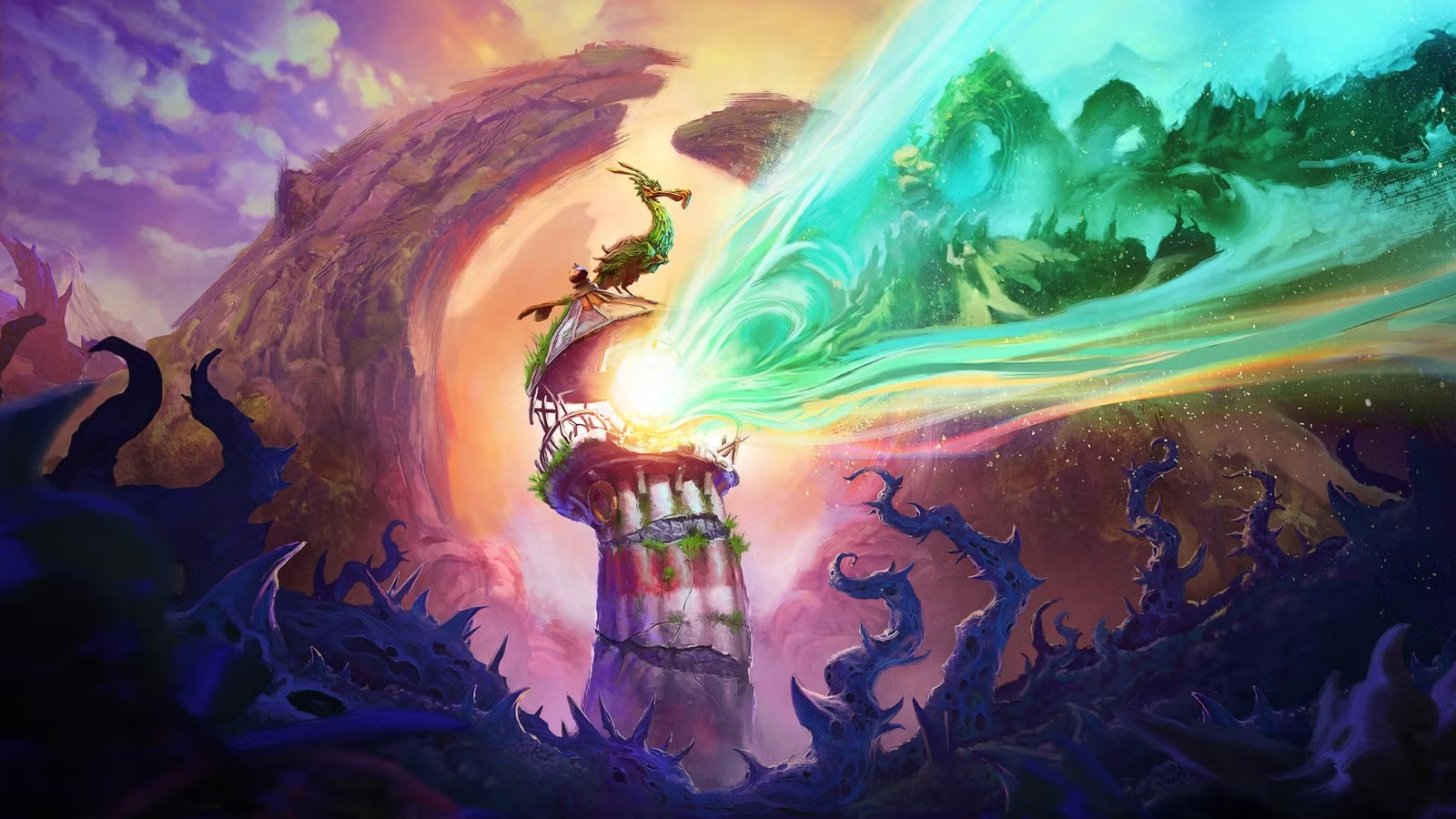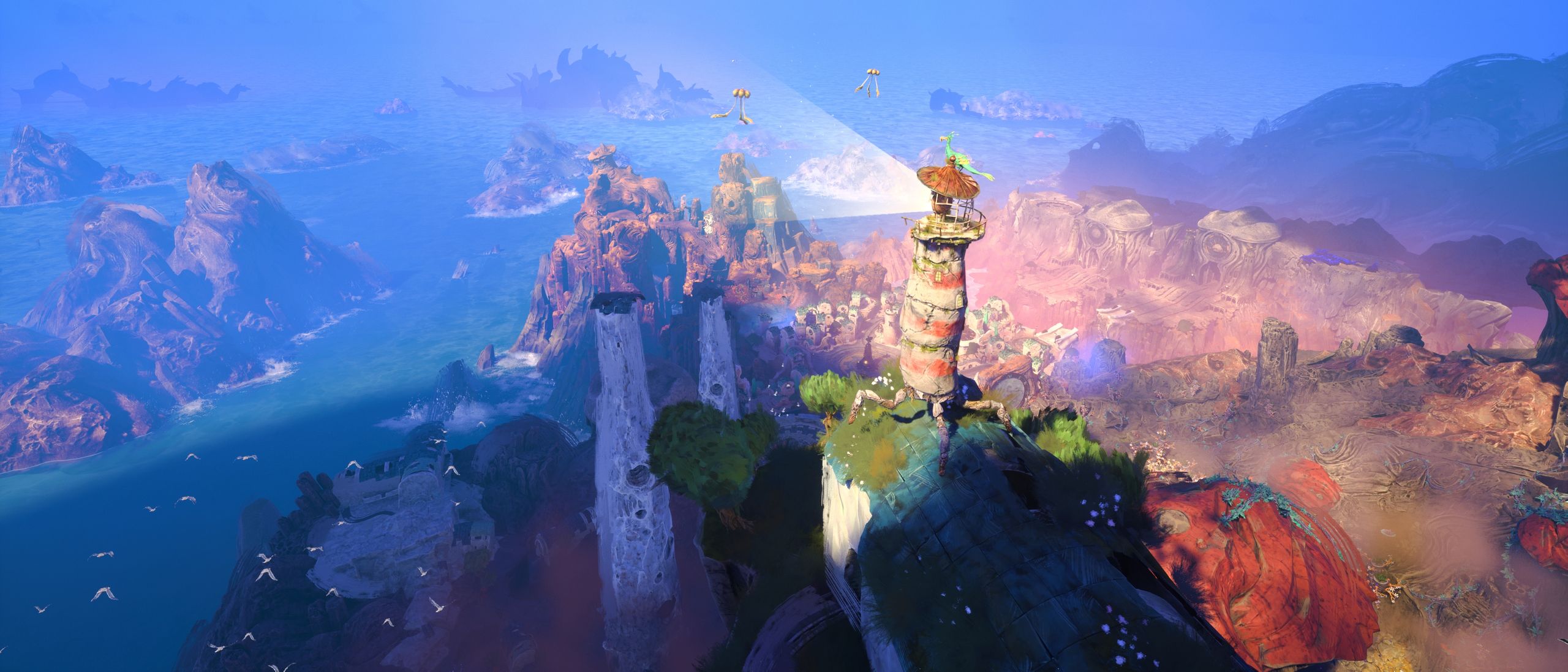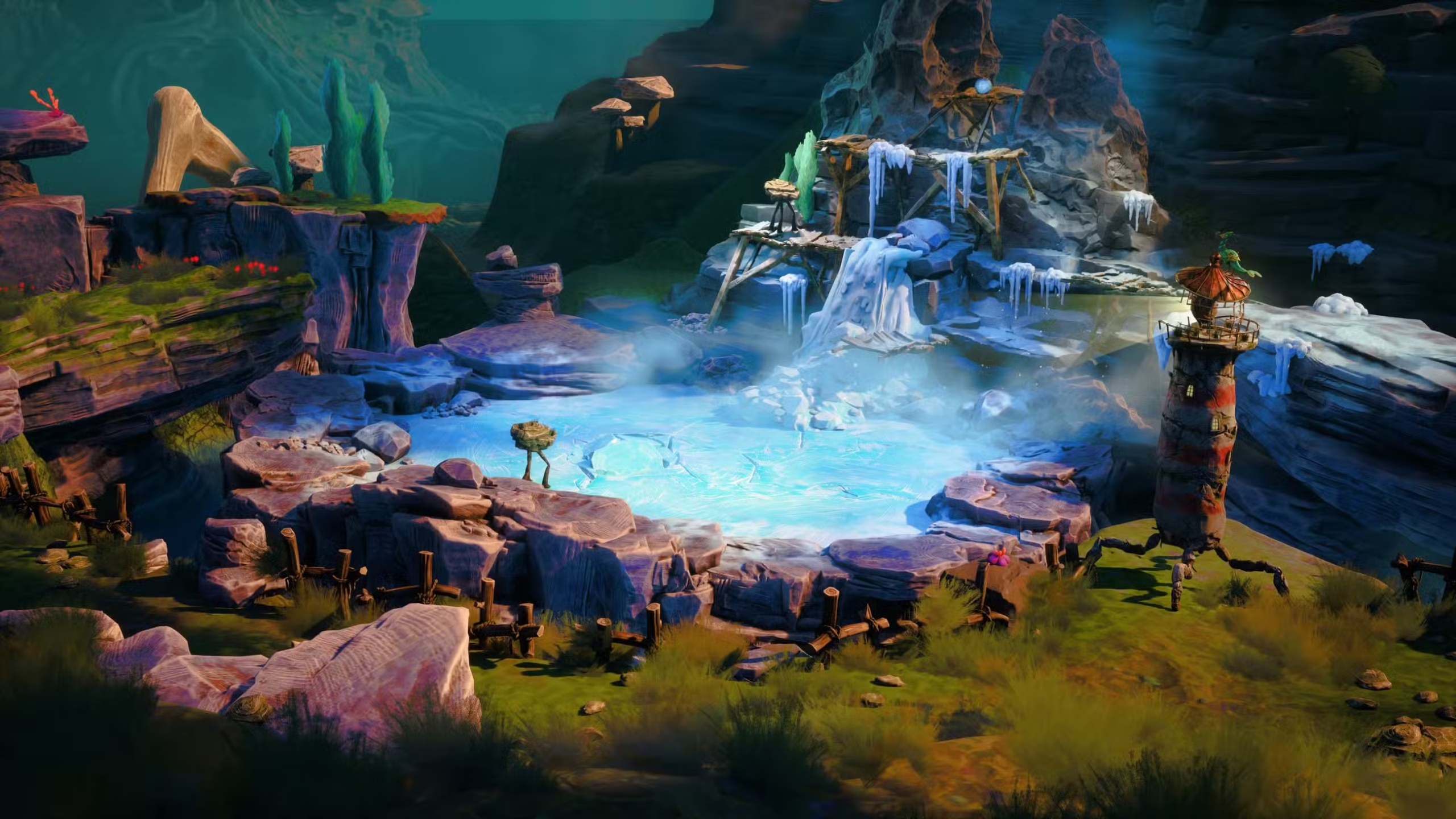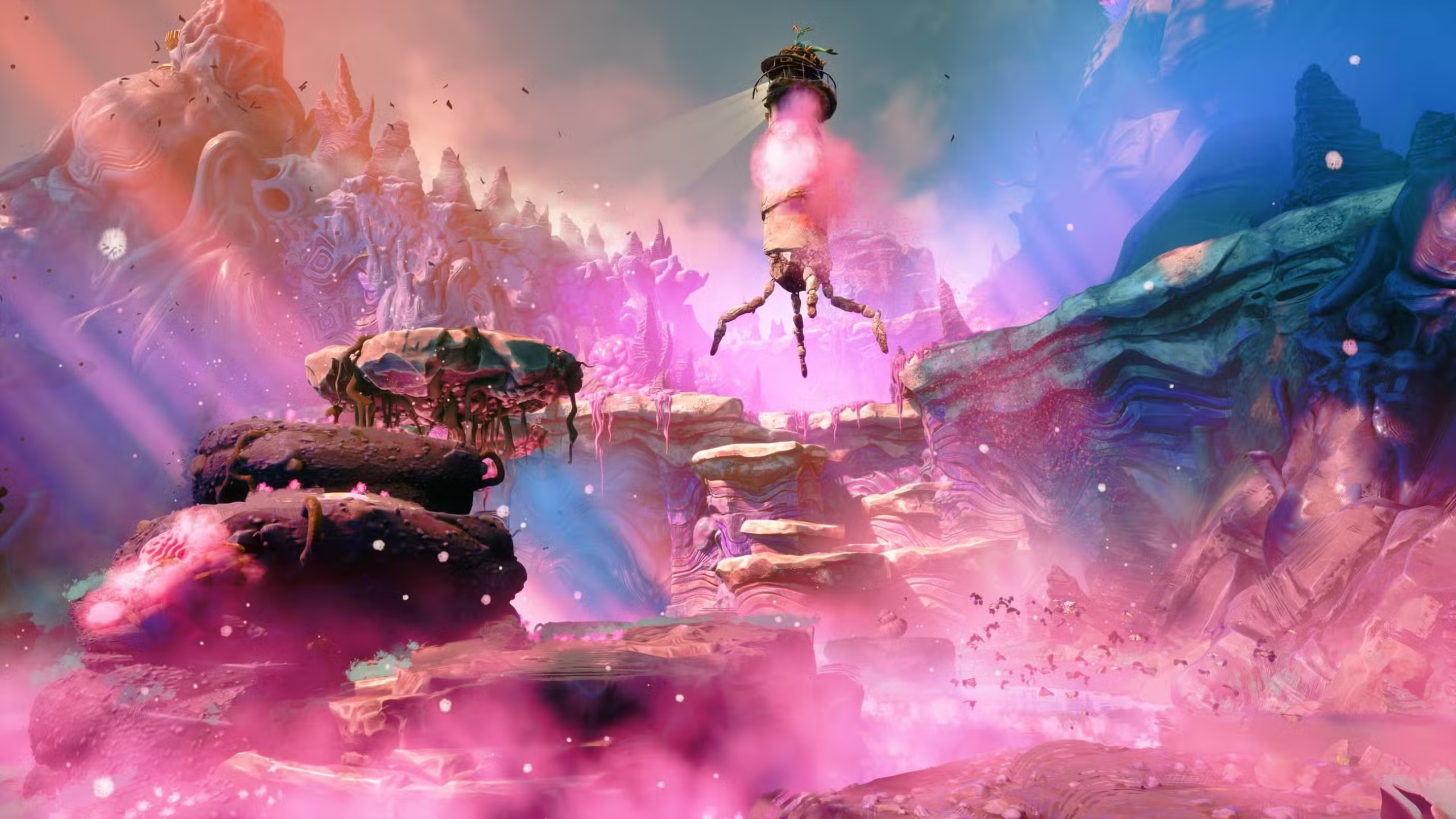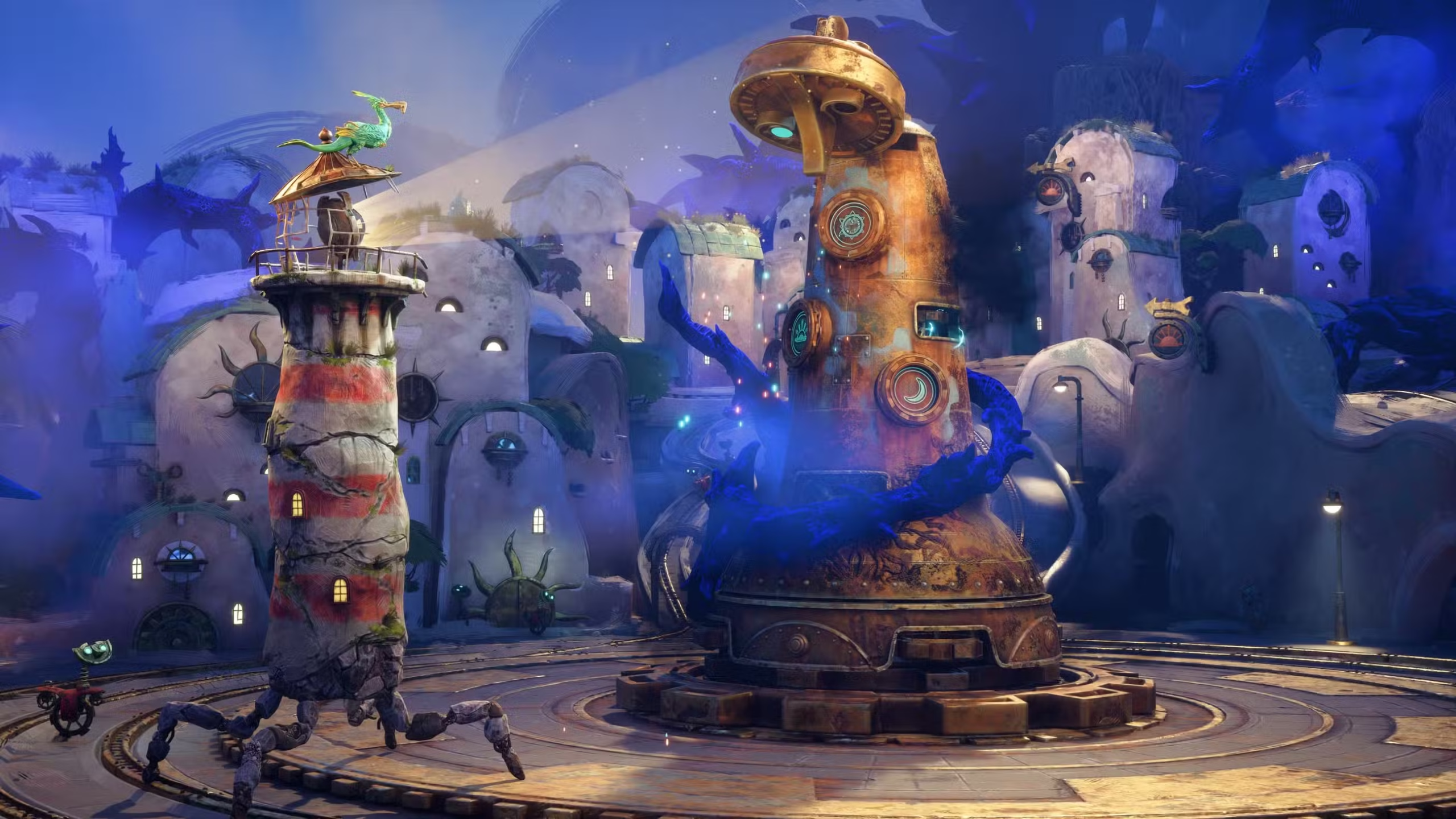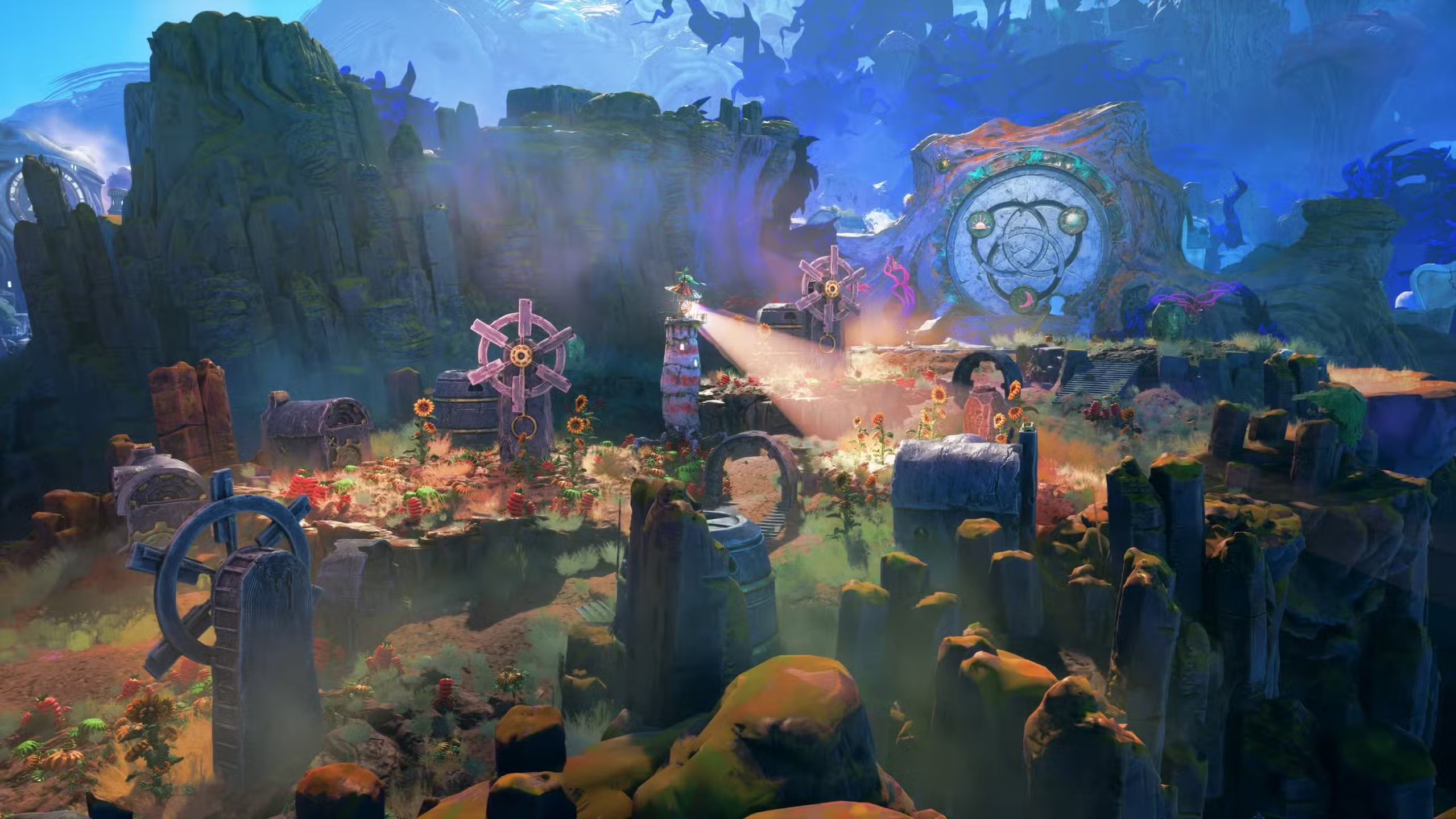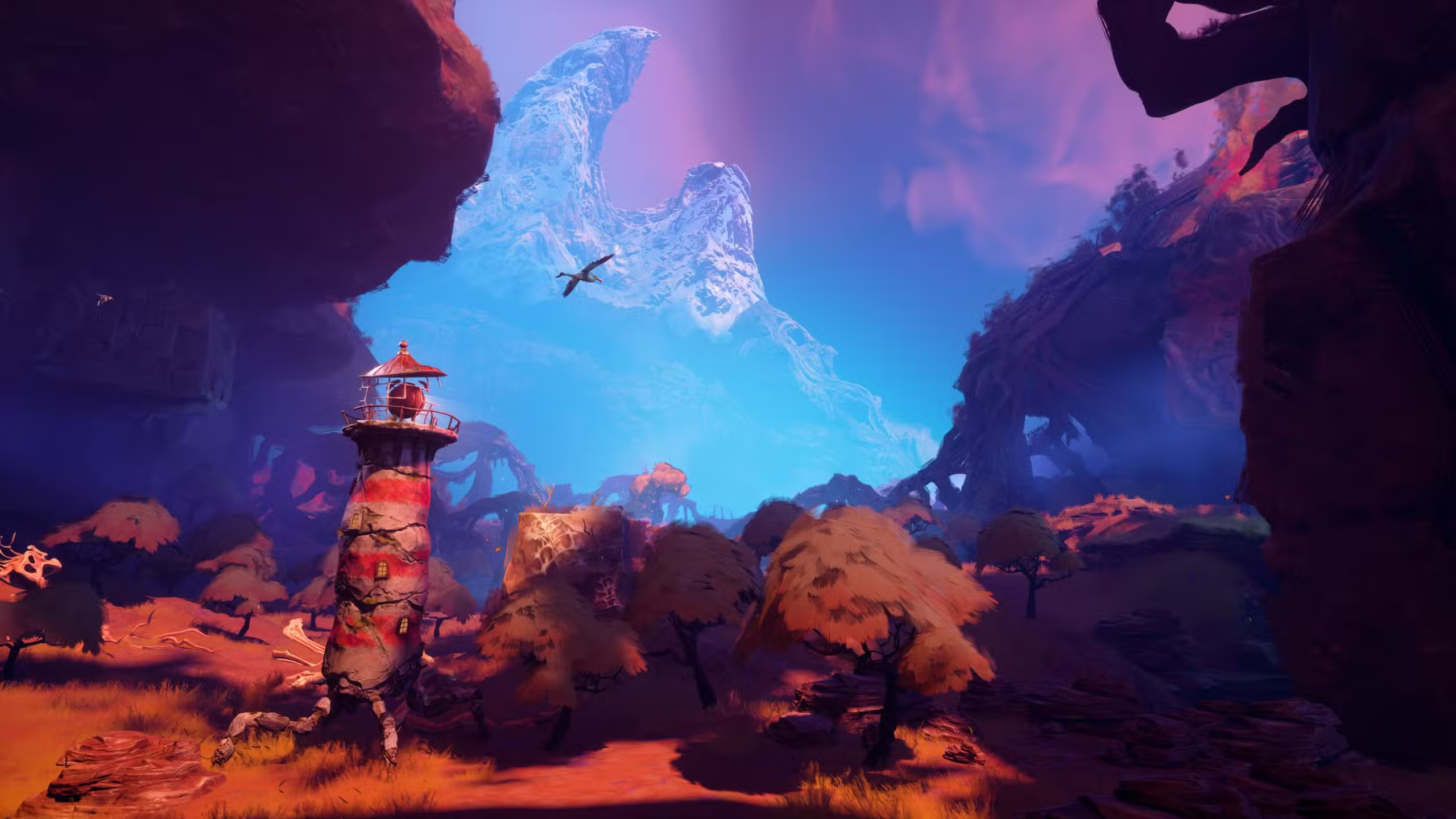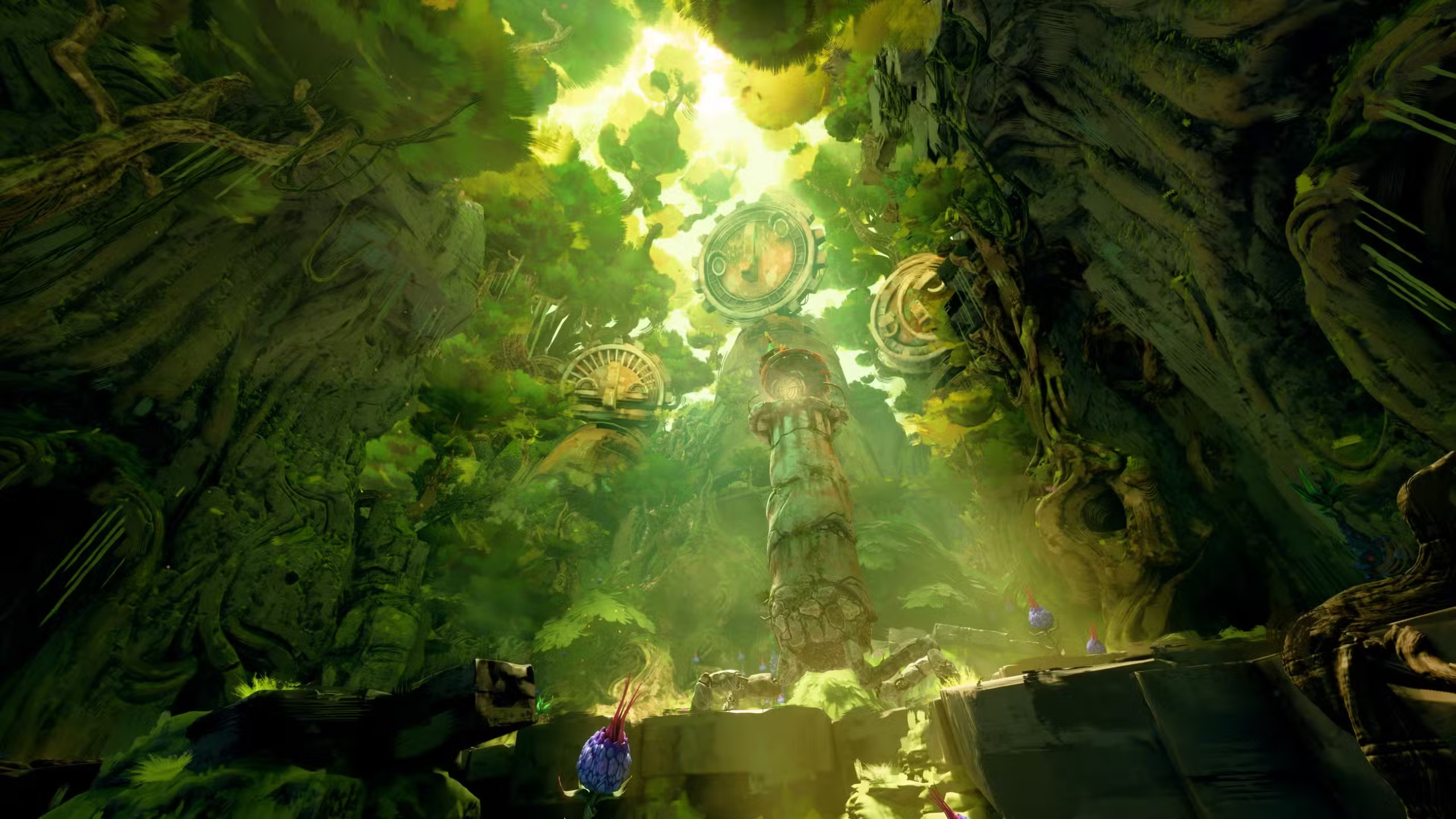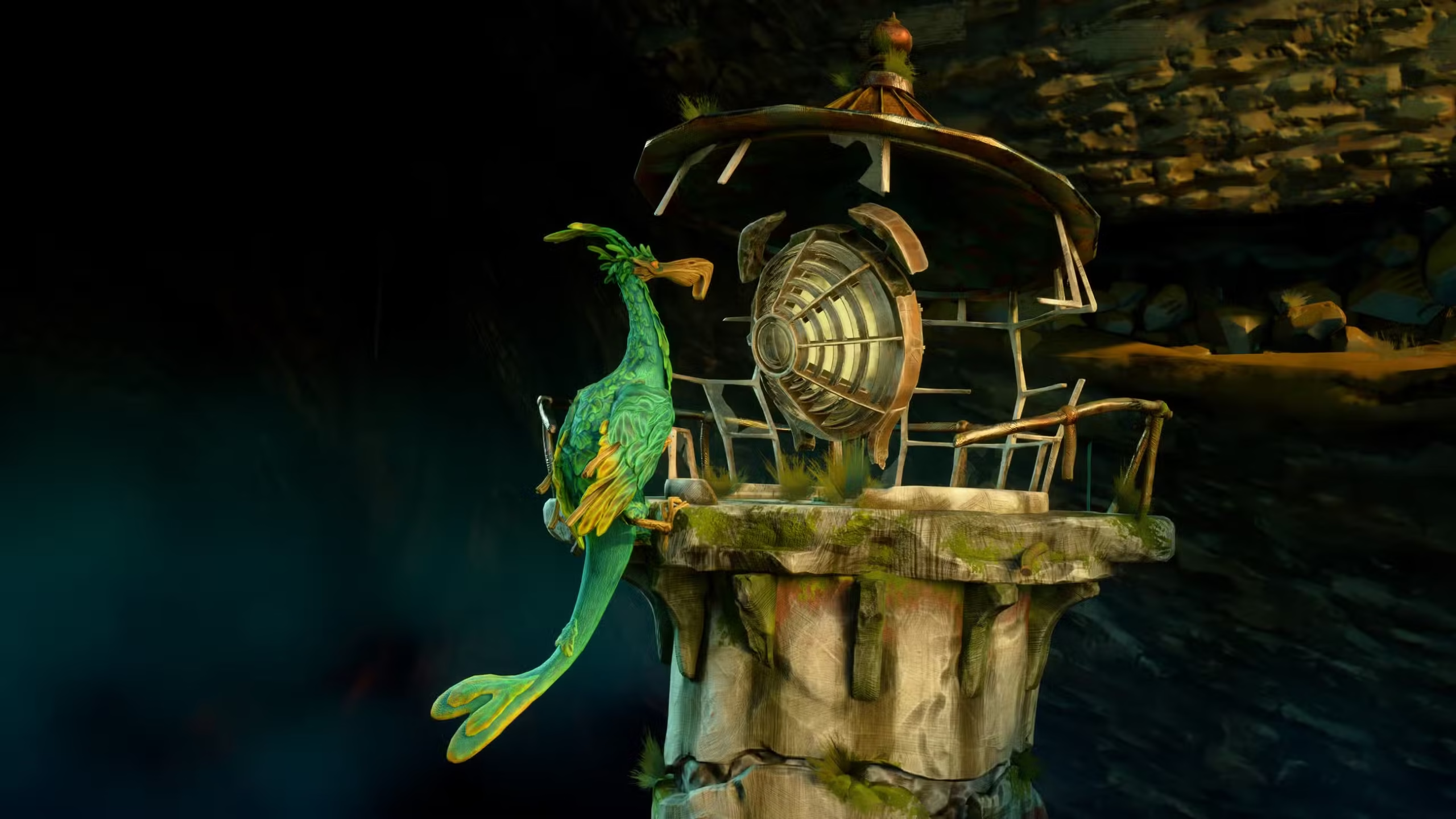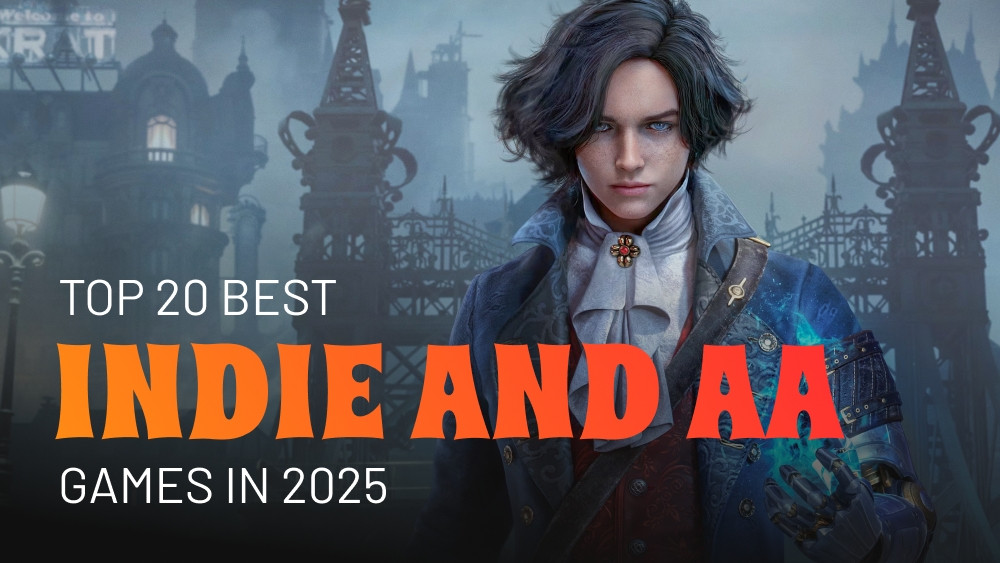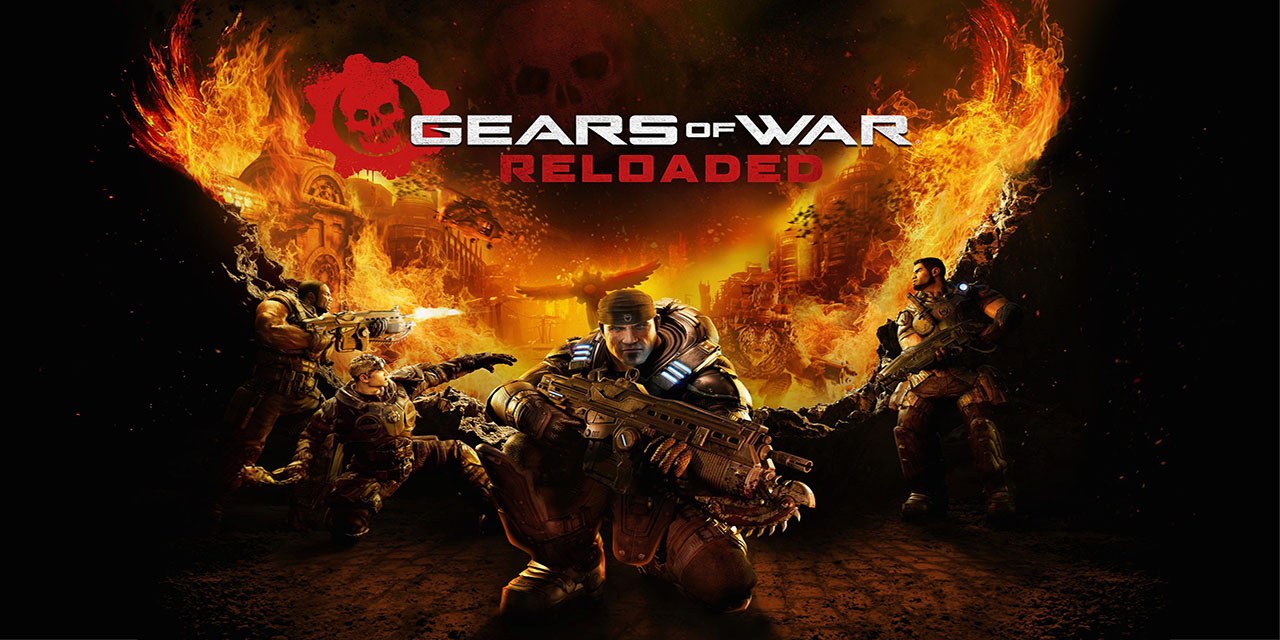Keeper Review: When Gorgeous Visuals Can’t Save Tedious Gameplay
Double Fine has spent two decades building a reputation for quirky, experimental games that prioritize personality over polish. From Psychonauts’ mind-bending platforming to Brutal Legend’s genre-defying chaos, the studio’s catalog embraces creative risks even when execution stumbles. Keeper, their latest release, breaks this pattern in frustrating ways—it’s easily Double Fine’s most visually stunning game, but also their most creatively conservative and mechanically sluggish.
You control a lighthouse that sprouts legs and explores a post-apocalyptic island alongside a bird companion named Twig. Over 3-4 hours, you’ll cleanse corruption and restore life to dead environments. Sound familiar? It should, because this premise has been done countless times before, especially in indie circles. What made Double Fine special was their ability to find fresh angles on familiar concepts. Keeper doesn’t do that.
The Story: Safe Territory Double Fine Already Explored Better
Keeper’s narrative hits all the expected beats: wake up in corrupted world, meet quirky companion, journey toward mystical peak while gradually restoring light and life. Games like Ori and the Blind Forest, Kena: Bridge of Spirits, and even this year’s Sword of the Sea have explored this exact territory. Keeper brings nothing new to these well-worn themes.
The 3-4 hour runtime doesn’t help. There’s barely enough space to establish world-building before the credits roll, and what little context exists gets relegated to achievement descriptions. Find a hidden statue, unlock an achievement, read a sentence or two about the world’s history. It’s a bizarre choice that makes storytelling feel like an afterthought rather than a priority.
What emotional moments exist arrive predictably. If you’ve played any game with this restoration-of-life structure, you’ll see every narrative beat coming from miles away. The lighthouse protagonist lacks the personality of Psychonauts’ Raz or Broken Age’s Shay and Vella. Twig the bird provides occasional chirps but never develops beyond “cute sidekick.” There’s potential here for exploring themes of isolation, purpose, or environmental destruction, but Keeper never commits to any deeper ideas.
The final act attempts some emotional weight, and credit where due—those moments mostly land. But they feel disconnected from everything preceding them, like Double Fine suddenly remembered they needed to give players something to feel at the very end.
Visual Design: The One Area Where Keeper Excels
If you judged Keeper purely on screenshots, you’d think Double Fine created a masterpiece. The art direction represents everything the studio does well, taking their signature carved-clay aesthetic from Psychonauts and elevating it with current-generation rendering tech. Character models have incredible texture detail and expressiveness. The lighthouse itself moves with weight and personality despite being, well, a building.
Environmental design leans heavily into surreal, dream-like imagery that recalls Van Gogh’s swirling landscapes. Everything feels slightly warped and unsettling even when beautiful, creating an atmosphere that’s genuinely captivating. Double Fine’s artists clearly poured enormous effort into making every frame look painterly and distinct.
The fixed camera angles reinforce this artistic vision, framing scenes to emphasize scale and beauty. Some shots feel deliberately composed to showcase the island’s organic architecture or highlight the contrast between corrupted and restored areas. It’s visual storytelling at its best—at least when the cameras aren’t actively fighting your attempts to play the game.
Those fixed angles that work so well for atmosphere become gameplay obstacles constantly. The camera switches perspectives abruptly as you move through spaces, making navigation disorienting. Trying to aim your light beam at specific objects becomes guesswork when the camera suddenly swaps to a new angle mid-action. Beautiful composition matters less when it makes moment-to-moment play frustrating.
The final 45 minutes deserve special mention for pushing visual creativity even further. Without spoiling specifics, this sequence embraces the psychedelic, mind-bending imagery Double Fine perfected in Psychonauts, creating genuinely memorable scenes that justify the game’s visual ambitions. If only the rest of Keeper maintained that energy.
Gameplay: Where Everything Falls Apart
Here’s where Keeper becomes genuinely disappointing. Double Fine has never been known for cutting-edge mechanics, but their games usually feature some experimental hook that makes them interesting to play. Brutal Legend mixed hack-and-slash combat with real-time strategy. Psychonauts 2 built entire levels around conceptual metaphors that changed how you interacted with environments. Even their smaller projects like Costume Quest or Stacking had distinctive mechanical identities.
Keeper doesn’t. The core gameplay loop involves waddling slowly through environments, awkwardly aiming your light beam at objects, waiting several seconds for something to change, then moving forward. That’s it. Puzzles rarely demand more than “find the one interactable object in this space and shine light on it.”
The game introduces new mechanics periodically—time manipulation that lets you rewind or fast-forward environmental changes, the ability to send Twig to activate switches or stand on pressure plates, light-based platforming challenges. None of these additions meaningfully change how you play or require creative thinking. Time manipulation sounds promising until you realize puzzles still reduce to “shine light on obvious totem, wait for obvious thing to happen.”
Challenge is essentially nonexistent. I don’t think I got stuck on a single puzzle for more than 30 seconds during the entire playthrough. Most “solutions” involve scanning the environment until you spot the one highlighted object you can interact with, then doing so. There’s no satisfaction in solving these puzzles because they never pose actual problems requiring thought.
The lighthouse’s movement makes everything worse. You control a heavy, awkward building with legs, which theoretically should feel novel and interesting. Instead, it just feels clunky and slow. The animations convey weight effectively—the lighthouse lurches and sways as it walks—but this comes at the cost of responsive controls. Navigating narrow paths becomes tedious. Trying to position yourself to aim light beams precisely is aggravating.
This movement problem compounds throughout the experience because Keeper involves a lot of backtracking through areas you’ve already cleared. Slowly waddling back through spaces you’ve already explored, waiting for heavy walking animations to complete, becomes genuinely tedious.
Pacing Issues Make Short Runtime Feel Longer
Despite being only 3-4 hours long, Keeper feels padded. The game splits into roughly four acts, each introducing one or two new mechanics. The problem is that act lengths vary wildly. Some drag on far too long considering their simple mechanics. Others end just as you’re starting to grasp the possibilities. There’s no rhythm or flow to progression.
Mechanics overstay their welcome or get abandoned before you can explore them. The time manipulation section, for example, extends across a huge chunk of the game despite offering minimal mechanical depth. You see everything it can do in the first 15 minutes, then repeat those same interactions for another hour. Conversely, some later abilities get introduced and then immediately taken away before you’ve barely used them.
This uneven pacing makes Keeper feel like it’s lurching from section to section without cohesive structure. You’re always either bored because you’ve been doing the same simple thing for too long, or frustrated because you barely got to try something before it disappeared.
The final 45 minutes partially redeem this pacing mess. Without spoiling details, the game finally picks up momentum—both literally and metaphorically. Movement becomes more dynamic, puzzles require quicker thinking, and the visual creativity peaks. It’s the only section that feels like classic Double Fine energy. But it’s too little too late after 3+ hours of monotony.
Where’s the Double Fine Personality?
What bothers me most about Keeper isn’t that it’s mediocre—it’s that it feels generic. Double Fine built their reputation on games with distinctive personality, even when mechanics struggled. Grim Fandango, Psychonauts, Brutal Legend, Broken Age—these games have identity. They’re weird, they’re experimental, they take creative risks that don’t always pay off.
Keeper plays it safe at every turn. The restoration-of-life narrative has been done to death. The puzzle mechanics feel borrowed from dozens of other puzzle-adventures without meaningful iteration. The lighthouse protagonist has no personality beyond “lighthouse with legs.” Even Twig, who should inject some character into proceedings, barely registers as more than a functional tool for reaching switches.
There’s no humor, which has always been a Double Fine trademark. There’s no experimentation with form or genre conventions. There’s no sense that the developers had a specific creative vision they were passionate about realizing. Keeper feels like it was designed by committee to hit “wholesome puzzle game” checkboxes rather than express anything specific.
The achievement-based storytelling exemplifies this lack of commitment. Instead of trusting players to care about the world enough to explore it naturally, Keeper bribes you with achievement pings and tucks crucial context into menus. It’s the opposite of environmental storytelling—it’s admitting your world isn’t interesting enough to explore organically.
Technical Performance: At Least It Runs Fine
On Xbox Series X, Keeper runs smoothly without major technical issues. Frame rate stays consistent, loading times are reasonable, and I didn’t encounter any crashes or game-breaking bugs. The visual quality is legitimately impressive from a technical standpoint, with detailed textures, sophisticated lighting, and smooth animations.
This technical competence makes the gameplay problems more frustrating. There’s no excuse of “well, it’s buggy but the ideas are good.” Keeper is a polished product that simply isn’t fun to play. That’s somehow more disappointing than a broken game with brilliant concepts.
The Value Question
Keeper is available on Xbox Game Pass, which significantly changes its value proposition. If you’re already subscribed, trying it costs nothing beyond time. The 3-4 hour runtime won’t demand a huge investment, and the visual artistry alone might justify experiencing it once.
As a standalone purchase at full price? Much harder to recommend. You’re paying for a short, mechanically shallow puzzle game with gorgeous visuals. Whether that’s worthwhile depends entirely on how much you value art direction over gameplay. For most players, the answer is probably “not enough.”
Who This Is For
If you’re an art direction enthusiast who watches games as much as plays them, Keeper might work for you. The visual design genuinely deserves recognition. Frame it, screenshot it, appreciate the craft that went into every environment.
If you’re a completionist Double Fine fan who needs to experience everything the studio makes, you’ll want to check this out despite its flaws, if only to have opinions on it.
If you want a relaxing, low-stress experience where you can zone out and solve easy puzzles while looking at pretty visuals, Keeper delivers that specific experience adequately.
For everyone else—players who want engaging mechanics, challenging puzzles, strong narrative, or any of the personality Double Fine is known for—Keeper disappoints. It’s the studio’s safest, most forgettable game in a catalog that’s usually anything but.
